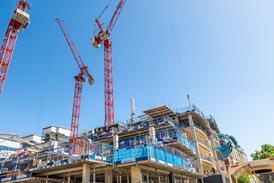- News

All the latest updates on building safety reformRegulations latest
- Focus
- Home
- News
- Focus
- Comment
- Events
- CPD
- Building the Future
- Jobs
- Data
- Subscribe
- Building Boardroom
Market update: Birmingham
By Ciara Walker, Matt Viall and James Bradley 2019-10-28T13:48:00

Investment in regeneration, a young population and fast-growing employment opportunities have boosted Birmingham’s construction market
01 / Introduction
As Birmingham continues to enjoy the demographic dividend of a young population driving demand across construction sectors, its strong market fundamentals will deliver a better market performance than many other regions in terms of growth, most notably London. While the area is, like the rest of the UK, exposed to a no-deal Brexit, the city is well placed to fend off the worst of the anticipated slowdown in activity. Consequently, we expect 0.75% tender price inflation for mainstream contractors in 2019 – a tighter market than London’s flat performance. Major projects contractors, with more market power to drive margins, will continue to operate in a relatively busy market, and be able to push prices up by 2%.
Read more…
Already registered? Login here
To continue enjoying Building.co.uk, sign up for free guest access
Existing subscriber? LOGIN
Stay at the forefront of thought leadership with news and analysis from award-winning journalists. Enjoy company features, CEO interviews, architectural reviews, technical project know-how and the latest innovations.
- Limited access to building.co.uk
- Breaking industry news as it happens
- Breaking, daily and weekly e-newsletters
Get your free guest access SIGN UP TODAY

Subscribe now for unlimited access
Subscribe to Building today and you will benefit from:
- Unlimited access to all stories including expert analysis and comment from industry leaders
- Our league tables, cost models and economics data
- Our online archive of over 10,000 articles
- Building magazine digital editions
- Building magazine print editions
- Printed/digital supplements
Subscribe now for unlimited access.
View our subscription options and join our community


















